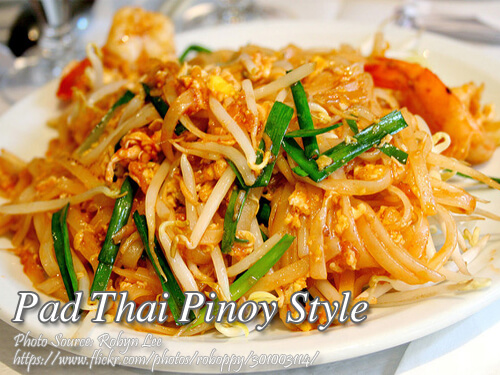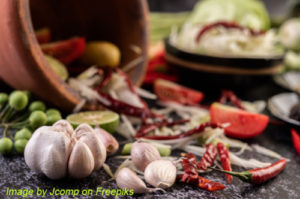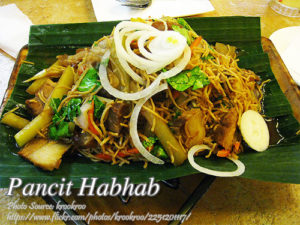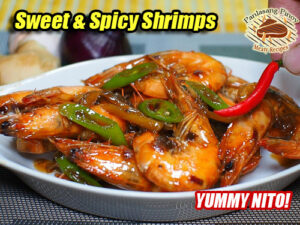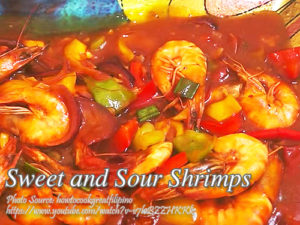Pad Thai is a national dish of Thailand and is the counter part of our favorite stir fried noodles or commonly called as “pancit”. There are many version of pancit locally and maybe because of our love of eating pancit that we gladly accept this foreign dish. But to those not yet tasted this dish, the taste is not as we use to know with regards to stir fried noodles.
It’s because it has a sweet, sour and very spicy taste which is common to Thai cuisine. But in this recipe, you can omit or lessen the chilies if you want to if you are not fond of eating spicy foods. And also, the ingredients that are not readily available is the tamarind paste and dried shrimp powder. I think you can use powdered sinigang mix as a substitute for the tamarind paste and shrimp bouillon cubes for the shrimp powder.
Pad Thai Pinoy Style: A Filipino Twist on a Thai Classic
When I first heard about Pad Thai, it seemed like an exotic dish with flavors far different from the Filipino pancit I grew up with. It wasn’t until my sister returned from a trip to Thailand that I decided to try making this dish at home. She couldn’t stop raving about the vibrant flavors—sweet, sour, spicy, and savory all at once—that made Pad Thai such a standout. Inspired by her stories, I wanted to recreate this classic Thai dish, but with a few tweaks to suit our local pantry and preferences. What resulted was a delightful mix of familiar and foreign, a dish that feels both Thai and distinctly Pinoy.
Pad Thai and Pancit: A Love Affair with Noodles
Growing up in a Filipino household, noodles have always been a staple. Whether it’s the iconic pancit bihon at birthdays or a comforting bowl of lomi on a rainy day, we Filipinos love our noodles. So, it’s no surprise that Pad Thai has found its way into many Filipino kitchens. While pancit is usually mild and savory, this dish takes a different route. It’s packed with a medley of sweet, sour, and spicy notes—typical of Thai cuisine, but not something our taste buds are always used to.
Still, with a few tweaks here and there, you can adjust the dish to your liking. For instance, if you’re not a fan of spice, feel free to dial back the chilies or omit them altogether. The result is still a satisfying stir-fried noodle dish that’s flavorful without being overpowering.
A Filipino Pantry Makeover: Substitutes You Can Use
One of the challenges I faced when making this dish for the first time was sourcing some of the traditional ingredients. Tamarind paste and dried shrimp powder aren’t always available in local grocery stores. Thankfully, my uncle suggested using powdered sinigang mix as a substitute for tamarind paste, and it worked like a charm! The tartness from the sinigang mix mimicked the sourness of the tamarind without altering the overall flavor too much. For the dried shrimp powder, shrimp bouillon cubes did the trick, adding that subtle umami flavor without overwhelming the dish.
I’ve found that with these small adjustments, I’m able to enjoy a version of Pad Thai that’s both easy to prepare and accessible. It’s amazing how small changes can make a foreign dish feel right at home.
Cooking Tips from Lola: Balancing Flavors
One of the best cooking tips I’ve learned from my lola over the years is the importance of balance in any dish. When it comes to this stir-fried noodle dish, balance is key. You’ve got sweet, sour, salty, and spicy all coming together, and it’s important to taste as you go.
When I first made it, I was a bit too heavy-handed with the tamarind substitute, and it turned out too sour for my taste. Lola always says, “Tikman mo bago ka magdagdag.” Taste before adding anything, especially when dealing with strong flavors like fish sauce or tamarind. It’s easier to add more than to try and correct an overpowering taste.
If you’re new to cooking this kind of dish, start with small amounts of each flavoring ingredient and adjust to your liking. A well-balanced Pad Thai has just the right combination of sweet from the sugar, tangy from the vinegar, savory from the fish sauce, and a hint of spice from the chilies.
History of Pad Thai: A Dish Born from Necessity
Did you know that Pad Thai was actually born out of a time of economic hardship? Back in the 1930s and 1940s, Thailand was facing a rice shortage due to war, and the government promoted rice noodles as an alternative staple. This led to the creation of what is now one of the most famous street foods in Thailand. Its origins may have been humble, but today, Pad Thai is enjoyed all over the world. And just like us Filipinos, the Thai people have a deep love for noodles—so much so that Pad Thai became the national dish of Thailand.
Step-by-Step: My Take on Making This Dish
The process of making this dish at home isn’t too complicated, but it does require some prep work. I like to start by soaking the rice noodles in warm water until they soften. While waiting for the noodles, I fry the tofu until golden brown. This gives it a nice, chewy texture that contrasts well with the tender noodles.
Once the tofu is ready, I stir-fry chicken slices until they’re browned and set them aside. I learned from my uncle that using peanut oil gives the dish a richer, nutty flavor, so I always make sure to have some on hand when cooking. After the chicken, I sauté garlic and spring onions, followed by shrimp, which turns a beautiful bright orange in no time.
What really brings everything together is when the rice noodles meet the stir-fried ingredients. I toss them quickly in high heat with fish sauce, tamarind paste (or sinigang mix in my case), sugar, and shrimp powder. The final touch is adding the fresh toppings—bean sprouts, ground peanuts, and the remaining spring onions. This gives the dish that iconic crunch and freshness that balances out the richness of the noodles.
Serving It Up: A Family Favorite
Whenever I serve this noodle dish at family gatherings, it never fails to impress. Even my lola, who’s a staunch pancit fan, has come to love its unique blend of flavors. It’s a dish that invites curiosity—there’s something so fun about the combination of sweet, sour, and savory that gets people asking for seconds.
If you’ve never tried making it before, I encourage you to give it a go. The ingredients might be different from your usual pancit, but the process is similar, and the result is well worth the effort. Just like our beloved Filipino pancit, this dish brings people together at the table—and that, to me, is the heart of any good meal.
How to Make Pad Thai Pinoy Style
Ingredients
- 100 grams Pad Thai noodles flat rice noodle
- 2 Tbsp. tamarind paste
- 2 Tbsp. fish sauce
- 2 Tbsp. sugar
- 1 Tbsp. rice wine
- 2 Tbsp. annato extract soak 1 Tbsp annato seeds in 2 Tbsp hot water, discard seeds
- 200 grams firm tofu sliced into rectangles
- 2 Tbsp. peanut oil or corn oil
- 1 cup spring onions chopped 1 inch long
- 2 Tbsp. garlic chopped
- 2 whole raw eggs
- 2 cups cabbage chopped
- 1 Tbsp. dried shrimp powder
- 85 grams toge bean sprouts
- 1/2 cup salted peanut crushed or ground coarsely.
- 3 pcs chili pepper minced
- 200 grams chicken breast fillet sliced
- 100 grams shrimps shelled
- cooking oil
Instructions
How to make Pad Thai:
- Soak the rice noodles in warm water for about 30 minutes or until soft. Drain and set aside.
- Fry the tofu on all sides until brown. Set aside.
- On a clean wok, heat peanut oil and stir fry the chicken slices until brown. Set aside.
- On the same wok, saute garlic until fragrant, then add half of the spring onions and shrimps. Stir fry until the shrimps turns bright orange.
- Then add cabbage and fried tofu. Toss for about half a minute then turn off heat. Set aside.
- On the same wok, heat a tablespoon of oil and fry the eggs sunny side up. Then shred the eggs in the wok using the spatula then add the cooked ingredients (chicken, shrimp and veggies).
- Toss the ingredients in high heat for a few seconds then add the rice noodles, fish sauce, tamarind paste, sugar, powdered shrimp, annato extract and rice vinegar. Toss again for a few seconds then turn off heat.
- Add the chili pepper, half of the chopped spring onions, bean sprouts and ground peanuts. Toss again to mix the ingredients then serve hot.
Notes
Cooking Tips:
Use Sinigang Mix for Tamarind Paste
If tamarind paste is hard to find, powdered sinigang mix is a great alternative for that tangy kick. It provides the same sourness that balances the dish’s sweet and savory elements. Just remember to add it gradually and taste as you go to avoid making the noodles too sour.Fry Tofu Until Golden Brown
Make sure to fry the tofu until it’s crispy and golden on all sides. This adds a nice texture contrast to the soft noodles and tender chicken or shrimp. Properly browned tofu also absorbs the flavors better when tossed with the rest of the ingredients.Toss Noodles Quickly Over High Heat
When mixing the rice noodles with the sauce and other ingredients, keep the heat high and toss everything quickly. This prevents the noodles from becoming soggy and ensures that all the flavors are well distributed. A quick toss also keeps the noodles from sticking to the pan or clumping together.
